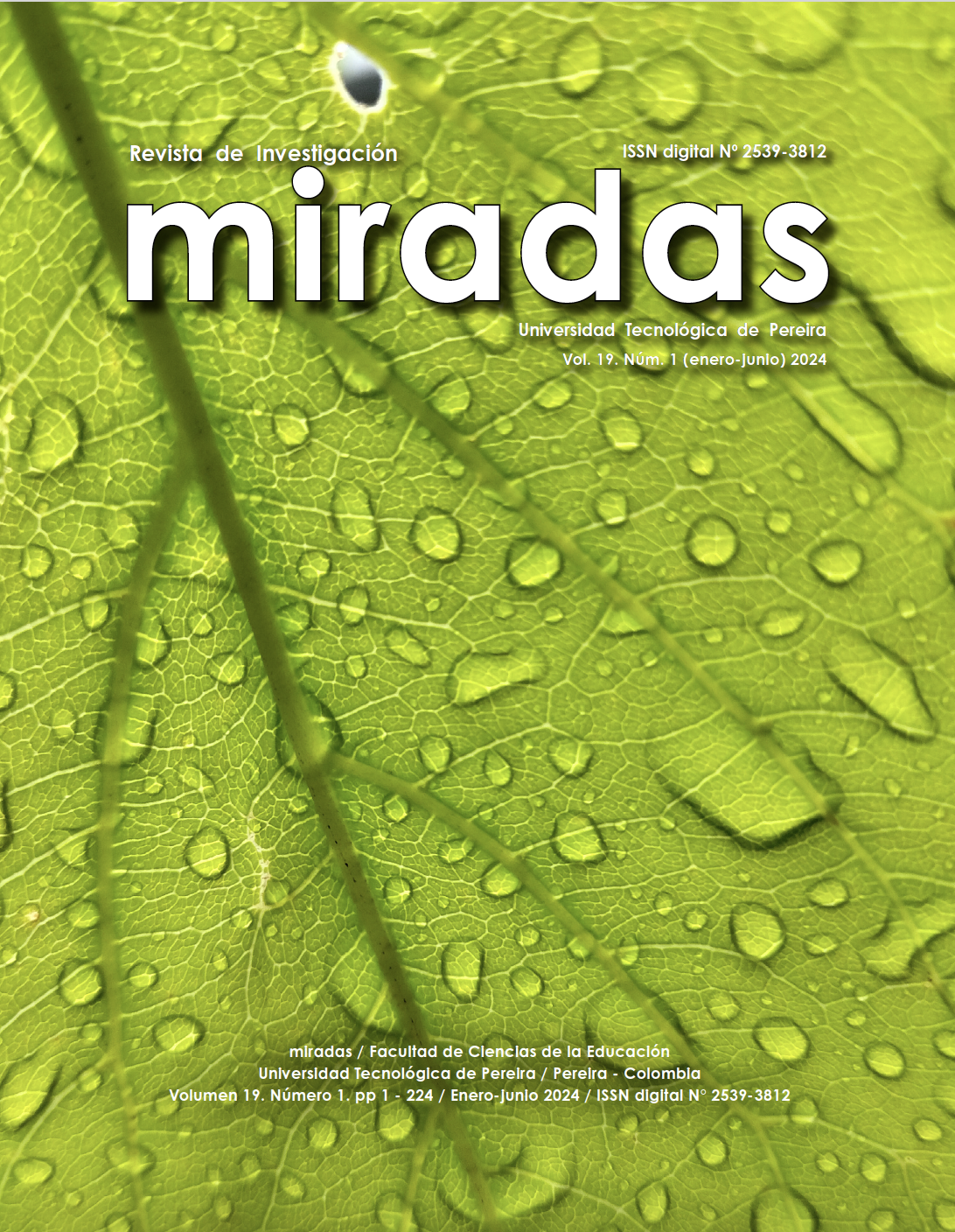Use of L1 in the higher education classroom
DOI:
https://doi.org/10.22517/25393812.25402Abstract
The use of the L1 in the classroom is an issue that all teachers have faced because it is not clear when and how to use the first language when teaching a second language. In this order of ideas, this descriptive research has been conducted to determine how and when professors of higher education use the first language when teaching English as a second language. The population are 22 professors working with young adults and adults belonging to bachelor´s degree at public universities and Language Centers in Tuxtla Gutiérrez, Chiapas, México. The instrument applied is a survey applied online, with five questions. The results conclude that not all the professors use the first language in the classroom and think the use of the L1 is incorrect because does not promote the L2 in the students and the students do not have enough practice. On the other hand, most of the teachers that participated in this research agree with the use of L1 for explanations; and to save time, especially when the groups are large, overall, when the students are beginners. This discussion continues open moreover about the length of time the teachers should use or do not use the L1 during the lessons because according to the data obtained, some of the professors use the L1 less than 15 minutes, but the media is around 15-30 minutes average in an hour, which could represent a problem. Then, it is important to reflect on the topic to learn how to deal with it and take the best decision to improve the students’ confidence and knowledge of the L2.
Downloads
References
Almoayidi, K. A. (2018). The effectiveness of using L1 in second language classrooms: A controversial issue. Theory and Practice in Language Studies, Vol. 8, No. 4, pp. 375-379. Retrieved in
DOI: http://dx.doi.org/10.17507/tpls.0804.02
Alton, M. (2021). Code-Switching in L2 Classrooms: A Useful Strategy to Reinforce
Learning. Canadian Journal of Language and Literature Studies. Vol. 1,1, pp. 21-26. Retrieved in https://www.cjlls.ca/index.php/cjlls/article/download/13/9
Bensen, H. (2013). Reason for the teachers’ uses of code switching in adult EFL classrooms. Sayt. 20,2. 69-82. Retrieved in https://www.hayefjournal.org/Content/files/sayilar/63/69.pdf
Beressa, K. (2003). Using L1 in The EFL Classroom: The Case of The Oromo Language With Particular Reference to Adama Teachers College. Addis Ababa University.
Cadena, B., Damián, D., Tacoaman, M. (2018). Use of L1 in English as a foreign language (ELF) learning environments. Boletin Virtual. 1,6. 1-15. Retrieved in https://dialnet.unirioja.es/descarga/articulo/6523312.pdf
Cambridge (2019). The use of L1 in English Language Teaching. ELT series. Retrieved in https://languageresearch.cambridge.org/images/CambridgePapersInELT_UseOfL1_2019_ONLINE.pdf
Carson, E., Kashihara, H. (2012). Using the L1 in the L2 classroom: The students speak. The language teacher. 36-4, 41-48. Retrieved in https://jalt-publications.org/sites/default/files/pdf-article/36.4_art1.pdf
Chang, S. (2011). A Contrastive Study of Grammar Translation Method and
Communicative Approach in Teaching English Grammar. English language teaching. Vol.4, No. 2. 13-24. Retrieved in https://citeseerx.ist.psu.edu/document?repid=rep1&type=pdf&doi=a50fd0f36a25f46ab9eea56d2098827435d57415
Council of Europe (2020). Common European Framework of Reference for Languages: Learning, teaching, assessment. Companion Volume. Retrieved in https://rm.coe.int/common-european-framework-of-reference-for-languages-learning-teaching/16809ea0d4
De la Campa, J., Nassaji, H. (2009). The amount, purpose and reasons for using L1 in L2 classrooms. Foreign language annals. 42, 4. 742-759. Retrieved in
Gorbhani, A. (2011). First Language Use in Foreign Language Classroom Discourse. Procedia social and behavioral science. 29, 1654-1659.
Retrieved in https://www.researchgate.net/publication/271562100_First_Language_Use_in_Foreign_Language_Classroom_Discourse
Hancock, M. (1997). Behind classroom code switching: layering and language choice in L2 learner interaction. TESOL Quarterly, 31,2, 217-235.
Kjøstvedt, K. (2020). Investigating Teachers’ Use of L1 in L2 Teaching. University of Adger. Retrieved in https://uia.brage.unit.no/uia-xmlui/bitstream/handle/11250/2681410/Kamilla%20Kjøstvedt.pdf?sequence=1
Kwon, C. (2014). Student perspectives on group work and use of L1: academic writing in a university EFL course in Thailand. Second Language Studies. 33.1. 85-124. Retrieved in https://core.ac.uk/download/pdf/77238782.pdf
Mart, C. (2013). The Facilitating Role of L1 in ESL Classes. International Journal of Academic Research in Business and Social Sciences. Vol. 3, No. 1. 9-14. Retrieved in https://hrmars.com/papers_submitted/9445/the-facilitating-role-of-l1-in-esl-classes.pdf
Meyer, H. (2008). The Pedagogical Implications of L1 Use in the L2 Classroom. Gunma University Academic Information, 147-160. Retrieved in https://core.ac.uk/display/141876659?utm_source=pdf&utm_medium=banner&utm_campaign=pdf-decoration-v1
Rance-Roney, J. (2010). Reconceptualizing Interactional Groups: Grouping Schemes for Maximizing Language Learning.1. 20-26. Retrieved in https://americanenglish.state.gov/files/ae/resource_files/10-48-1-d_2.pdf
Saruwatashi, S. (2020). Principal Reasons for Using L1 in the L2 Classroom. Junshin Repository. Retrieved in https://core.ac.uk/download/pdf/288228893.pdf
Sundary, H., Febriyanty, R. (2021). The Use of First Language (L1) in EFL Classrooms:
Teachers’ Practices and Perspectives. International Journal of Education. 14, 1. 70-77. Retrieved in https://ejournal.upi.edu/index.php/ije/article/download/26375/pdf
Tajgozari, M. (2017) Factors Contributing to the Use of L1 in English Classrooms: Listening to the Voice of Teachers and Students in Iranian Institutes. IJREE. 2 (2). Retrieved in http://ijreeonline.com/article-1-43-en.html
Taşçı, S., & Aksu Ataç, B. (2020). L1 use in L2 teaching:The amount, functions, and perception towards the use of L1 in Turkish primary school context. International Online Journal of Education and Teaching (IOJET), 7(2), 655-667. Retrieved in https://iojet.org/index.php/IOJET/article/view/816
Turnbull, M. (2001). There is a role for the L1 in second and foreign language teaching, but . . . Canadian Modern Language Review 57, 531-540.
Wang, M. (2022). Using L1 in L2 classroom. Research and Advances in Education.Vol.1, No. 5, 45-49. Retrieved in
Yavuz, F. (2012). The Attitudes of English Teachers about the Use of L1 in the Teaching of L2. Procedia - Social and Behavioral Sciences, 46, 4339-4344. Retrieved in https://doi.org/10.1016/j.sbspro.2012.06.251
Yi-chin, P, Yi-chun, P. (2010). The use of L1 in the foreign language classroom. Colombian Applied Linguistic Journal, 12 (2), 87-96.
Retrieved in http://dx.doi.org/10.14483/22487085.85
Zulfikar, Z. (2019). Rethinking the use of L1 in L2 classroom. English Journal. 6, 1, 42-51. Retrieved in http://dx.doi.org/10.22373/ej.v6i1.2514
Downloads
-
Vistas(Views): 502
- PDF (Español (España)) Descargas(Downloads): 241



